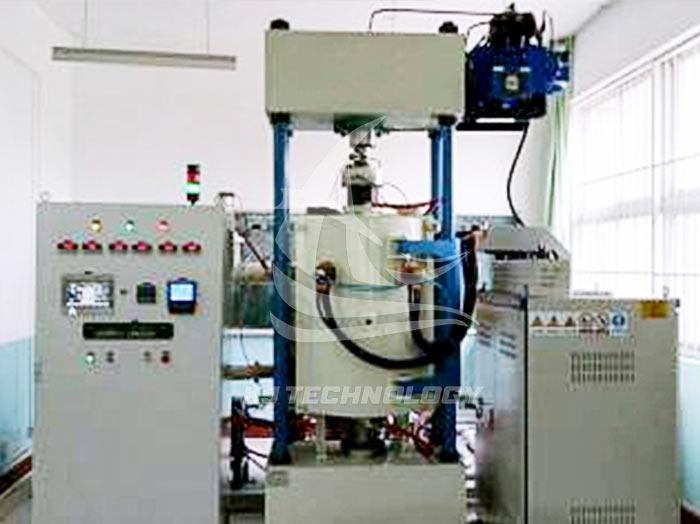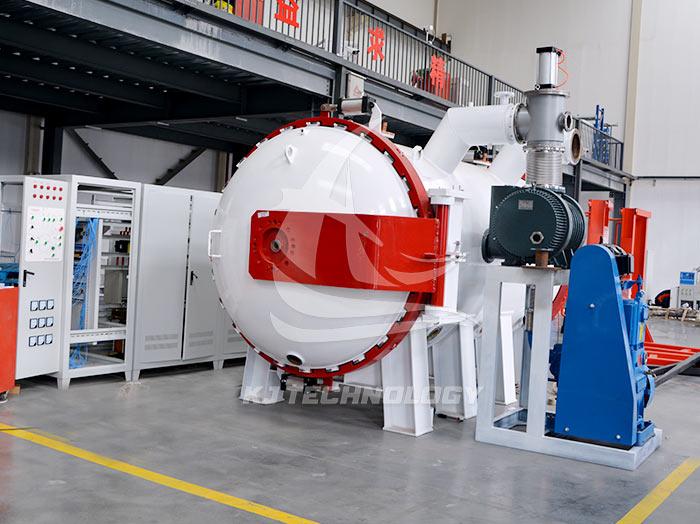Application of Electric Heating Vacuum Heat Treatment Furnace in the Field of Automotive Manufacturing
 08-14-2025 Author: KJ technology
08-14-2025 Author: KJ technology
Electric heating vacuum heat treatment furnace is widely used in the field of automobile manufacturing, covering the treatment of exhaust systems, engine components, transmission systems, chassis and suspension components, as well as core components of new energy vehicles. Its core advantages are non oxidative decarbonization, small deformation, performance improvement, and energy conservation and environmental protection. The following analysis will be conducted from multiple application scenarios:
1. Exhaust system treatment
Stainless steel exhaust manifolds and three-way catalytic converters: Stainless steel components (such as 409L and 316L) in automotive exhaust systems need to be annealed and polished to improve corrosion resistance and appearance quality. The electric heating vacuum heat treatment furnace avoids decarburization and chromium oxidation on the surface of stainless steel through a vacuum environment, maintains corrosion resistance (neutral salt spray test ≥ 500 hours) and surface smoothness (Ra ≤ 0.4 μ m), and uniformly heats to reduce deformation, meeting the sealing requirements of the exhaust system (leakage rate ≤ 0.1%).
Catalyst carrier treatment: During the drying, activation, and regeneration process of the catalyst, a vacuum environment can effectively remove impurities, improve the efficiency and service life of the catalyst.
2. Engine component processing
Aluminum alloy cylinder body and wheel hub: Aluminum alloy components such as engine cylinder body and wheel hub need to undergo solution treatment and aging strengthening to improve mechanical performance. The electric heating vacuum heat treatment furnace avoids surface oxidation and overburning of aluminum alloys through a vacuum environment, maintaining surface smoothness (Ra ≤ 0.8 μ m) and corrosion resistance (salt spray test ≥ 1000 hours), while accurately controlling temperature to ensure tissue uniformity, improving tensile strength (≥ 300MPa) and elongation (≥ 10%).
Titanium alloy connecting rods and valves: Titanium alloy components (such as TC4) need to be annealed and stress relieved to improve fatigue life. The vacuum environment suppresses hydrogen embrittlement, increasing the hydrogen content of titanium alloy to ≤ 0.002% and improving fracture toughness by 20%. At the same time, uniform heating reduces deformation, meeting the high-precision requirements of engine components (deformation ≤ 0.05mm).
3. Transmission system processing
Transmission gears and synchronizer rings: Transmission gears and synchronizer rings made of powder metallurgy need to be sintered and densified to improve their mechanical properties. The electric heating vacuum heat treatment furnace promotes diffusion and bonding between powder particles through a vacuum environment, improving density (≥ 98%) and tensile strength (≥ 800MPa), while accurately controlling temperature to avoid overheating or overburning, and maintaining dimensional stability (shrinkage rate ≤ 0.1%).
Differential housing and half shaft: Components such as differential housing and half shaft need to be quenched and tempered to improve hardness and wear resistance. Vacuum environment avoids surface oxidation and decarburization, maintains surface hardness uniformity (HRC difference ≤ 2), and uniformly heats to reduce deformation, improving product qualification rate.
4. Chassis and suspension component handling
High strength bolts and springs: High strength bolts and springs in chassis and suspension systems need to be quenched and tempered to improve tensile strength and fatigue life. The electric heating vacuum heat treatment furnace avoids surface oxidation and decarburization through a vacuum environment, maintains surface smoothness (Ra ≤ 1.6 μ m), and precisely controls temperature to ensure tissue uniformity, improving tensile strength (≥ 1200MPa) and fatigue life (≥ 10 million cycles).
Steering knuckles and control arms: Components such as steering knuckles and control arms need to be annealed and normalized to improve machinability. Vacuum environment avoids surface oxidation and decarburization, maintains surface hardness uniformity (HRC difference ≤ 1), and uniformly heats to reduce deformation, improving processing accuracy and product qualification rate.
5. Core component processing of new energy vehicles
Battery tray and motor housing: The battery tray and motor housing of new energy vehicles need to be annealed and aged to improve corrosion resistance and mechanical properties. The electric heating vacuum heat treatment furnace avoids surface oxidation and decarburization through a vacuum environment, maintaining surface smoothness (Ra ≤ 1.6 μ m) and corrosion resistance (salt spray test ≥ 1000 hours), while accurately controlling temperature to ensure tissue uniformity, improving tensile strength (≥ 350MPa) and elongation (≥ 12%).
Hydrogen fuel cell bipolar plates: Hydrogen fuel cell bipolar plates require annealing and surface treatment to enhance conductivity and corrosion resistance. Vacuum environment avoids surface oxidation and pollution, maintains surface resistivity stability (≤ 5m Ω· cm ²), and uniformly heats to reduce deformation, improving product performance and reliability.








